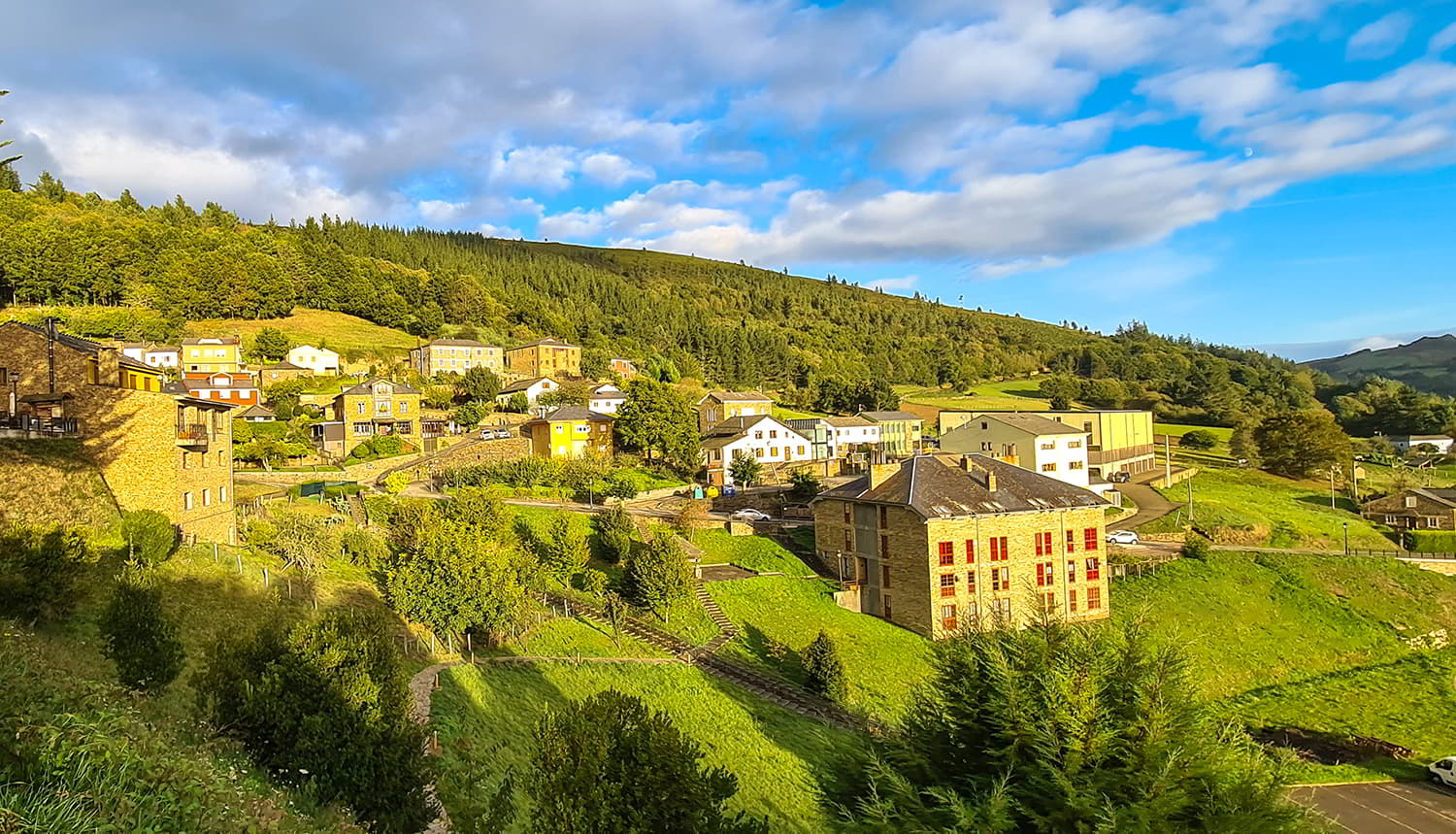Back Villages to discover the world of granaries in Asturias

Villages to discover the world of granaries in Asturias
The hórreos and paneras are a constant presence in the landscape of Asturias, and constitute one of the essences of the soul of this land.
Hórreos are a constant presence in the landscape of Asturias. So much so that a village without hórreos is like a garden without flowers. They form part of the daily life of the village houses, and reinforce the collective memory, that which transmits to us that without these aerial pantries, of palafitic style, and magnificently designed and ventilated, perhaps our lives, and those of the rest of the human species, would have been very different.
The presence of hórreos and paneras is, therefore, since time immemorial, an essential component of the soul of Asturias. And precisely as such they represent much more than just striking rural pantries, used mainly to keep crops and foodstuffs protected from damp and rodents, and thus preserve them in perfect condition for consumption. They represent a way of life, a culture, a strategy for survival and progress, and in short, a singular and unique worldview.
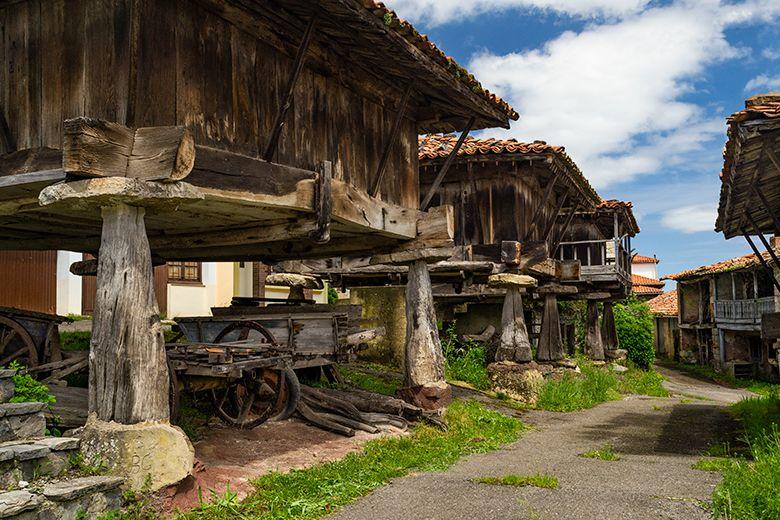
Their rounded forms show different constructive ingenuity, worthy of what was a powerful and deep-rooted collective intelligence. They also reveal the artistic concerns of the authors and owners, who often produced carvings and engravings that today arouse our admiration and curiosity. Not forgetting the expertise in the mastery of wood and stone, both for the calculation of the structure and for the precise positioning of each piece.
There are several styles that exist and coexist in Asturias when it comes to designing hórreos, and there are many villages where you can see them.
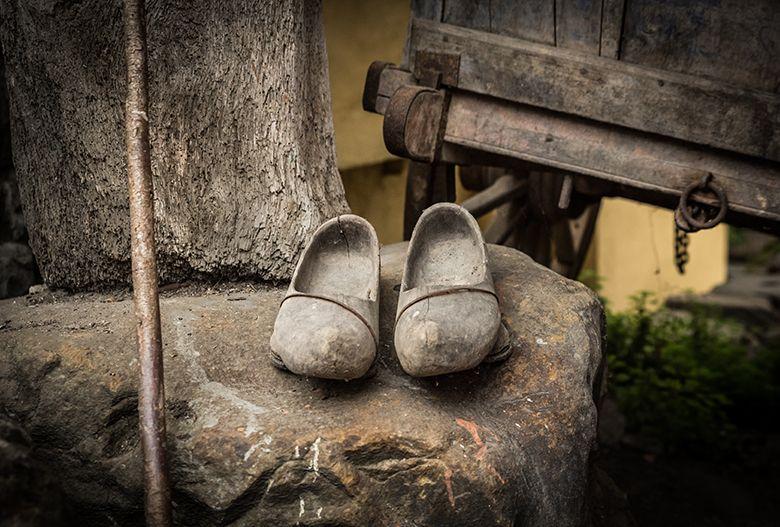
A journey through them is a great historical, cultural and ethnographic itinerary, and of course a fascinating trip to the most rural and authentic Asturias.
Villages that are the gateway to beautiful routes, the birthplace of heroes or medieval queens. Villages that have seduced locals and foreigners alike, and that have been the protagonists of unforgettable marketing campaigns. Exemplary Villages of Asturias, villages where magic and mythology can be breathed, where legends resound, villages in beautiful valleys and at the foot of the mountains, villages that have seduced the Roman Empire itself, and all with the common denominator of preserving that enigmatic and great invention that are the Asturian hórreos (raised granaries).
So here we begin a journey through different villages, ideal for discovering the beauty of the hórreos and their surroundings, and the evolution of history!
Barcia: almost a hundred air 'pantries
The coastal village of Barcia y Leiján, in Valdés, very close to the capital of this council, Ḷḷuarca, proudly displays its great ethnographic and cultural reserve. In Barcia there are a total of 83 hórreos, 15 paneras and a cabazo, that is to say, between them, there are 99 aerial 'depensas'.
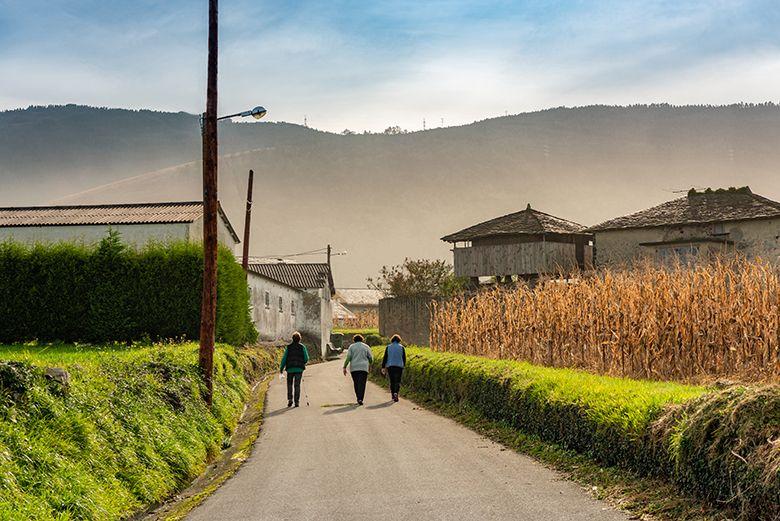
So Barcia is a more than excellent place to enjoy the quantity and quality of traditional architecture.

The hórreos you will see in Barcia are typical of western Asturias, characterised by their black slate roofs, and you will also be able to see a cabazo, also typical of this area, which is sure to be an exotic and different element.
And when you are in this village you cannot leave without visiting Los Molinos beach, of great beauty and where you will see waterfalls, a fairly uncommon phenomenon on the Asturian coast.
As if all this were not enough, Barcia is home to the only Muslim cemetery in northern Spain, dating from 1936, and whose creation is linked to the Spanish Civil War.
It is therefore clear that Barcia combines typicality, colour and a touch of exoticism.
Güeñu/Bueño, the Exemplary Village that made the hórreo (granary) its flag
Güeñu/Bueño, in Ribera de Arriba, is an ideal place to discover the world of hórreos. This village, which received the Exemplary Village of Asturias award from the Princess of Asturias Foundation in 2012, conserves 47 examples of Asturian hórreos.
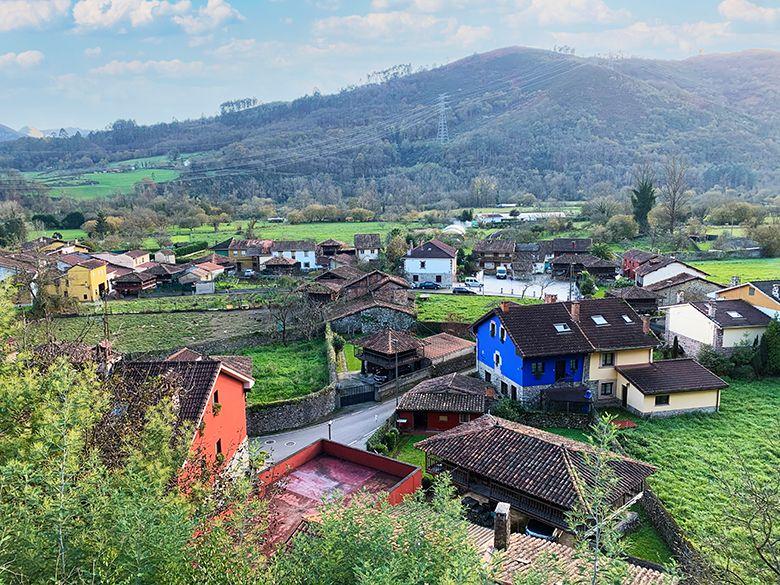
So on a walk through Güeñu/Bueño your retina will almost constantly dwell on the rural scenes that make up the hórreos.
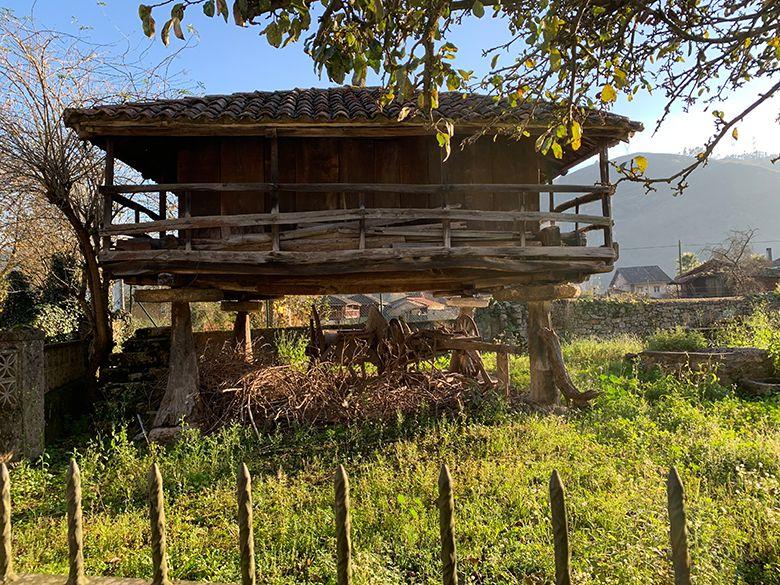
In Güeñu/Bueño you will discover the charm and secrets of rural Asturias, and a visit to the Hórreo Interpretation Centre is a must, where you will discover the origins of hórreos in Asturias, their different types and characteristics in a very didactic and entertaining way, by means of panels and models. You will also be able to see a simulation of the inside of an old hórreo, decorated with food and objects that were traditionally kept there.
Güeñu/Bueño represents the most notable concentration of hórreos close to the capital of Asturias, Oviedo/Uviéu, and is a village that has managed to make its traditions and hórreos its true driving force and flagship.
Espinaréu, with an "hórreo" (granary) in every corner
The village of Espinaréu, in Piloña, could be called the village of magical corners, because on a stroll through this village you will discover a hórreo in every nook and cranny.
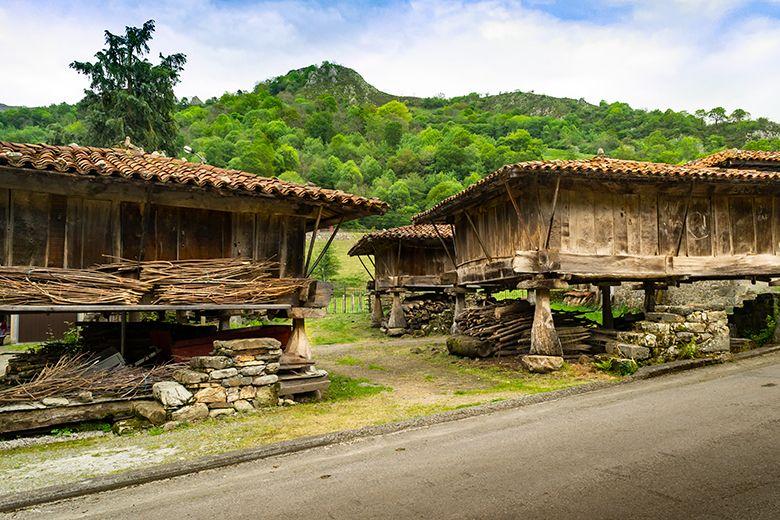
Espinaréu has almost thirty hórreos, most of them in a good state of conservation and in use.
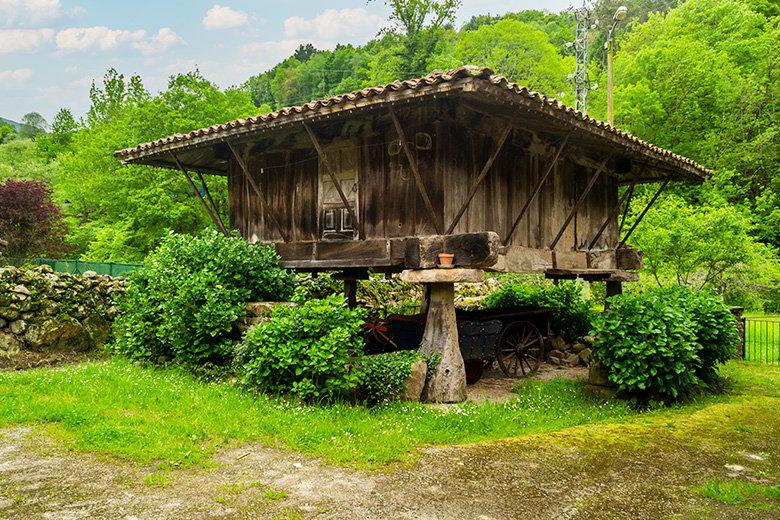
During your visit you can also discover the magnificent gastronomy of the area, with the option of tasting it under one of these hórreos, because there are some eating houses that serve it there, and it is a highly recommendable experience.
As is taking a dip or dipping your feet in the waters of the river Espinaréu, which adds a bucolic touch to this already charming village.
Espinaréu, gateway to the route to the Vizcares peak - the highest in Piloña - and to the idyllic river pool of La Pesanca, will make you vibrate with its ethnographic and traditional power.
Sevens or the most viral hórreos (granaries)
Sietes, in Villaviciosa, is striking for many reasons. The first is its sonorous and numeric name, as if it were magic, which led a well-known multinational computer company to focus its marketing campaign on this serene village a little over a decade ago.
And so it was that Sietes, its people and its hórreos became viral and mediatic.
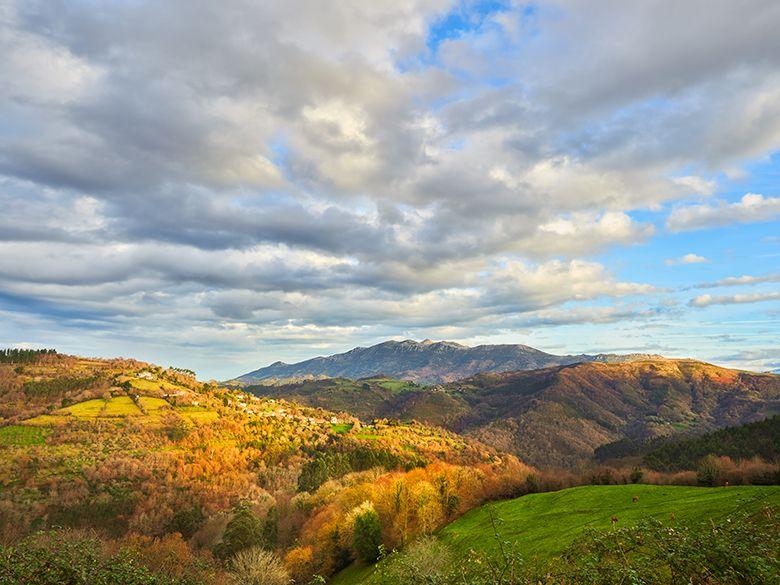
This quiet village also has one of the best examples of Renaissance religious architecture in Asturias: the church of San Emeterio, which looks splendid today, and which adds to its own beauty, that of the surrounding hórreos, generating a suggestive contrast.
Hórreos and more hórreos ( up to almost thirty) crowd together in the well preserved and well used caleyas de sietes, with their stored firewood and the occasional cart from the country. An atmosphere of authenticity where the hands of the clock seem to have stopped for a while.
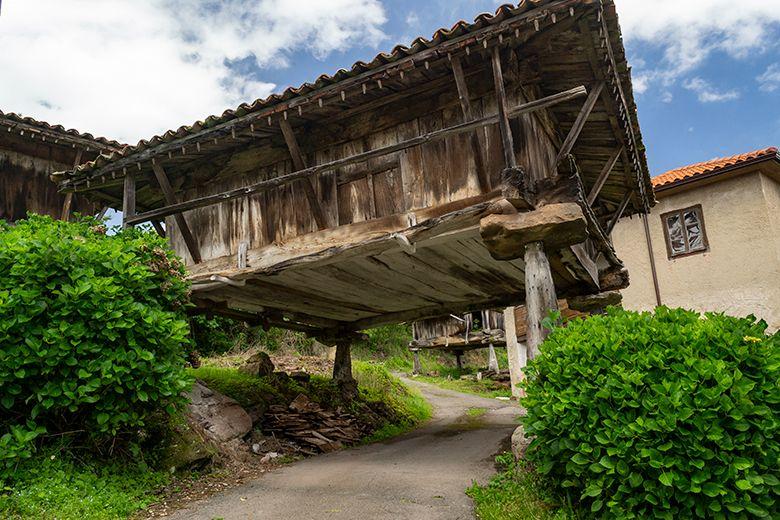
And a curious note: in few villages will you find a path that passes under the hórreo... Well, in Sietes it exists and the scene is unique!
Pen: a large breadbasket and the charm of mythology
Pen, in Amieva, is one of those villages with elves. So it is no coincidence that it is the beginning or the end of the famous Beyu Pen Route, also known as the Enchantment of Mythology, ideal for enjoying nature and getting in touch with the stories and characters of that part of Asturian culture that is related to magic and metaphysical environments.
But a stroll through Pen will also reveal that it is a very well-preserved village that respects traditional architecture, where some of the houses stand out, such as Casa Peri, a 17th-century mansion that originated in a late medieval watchtower.
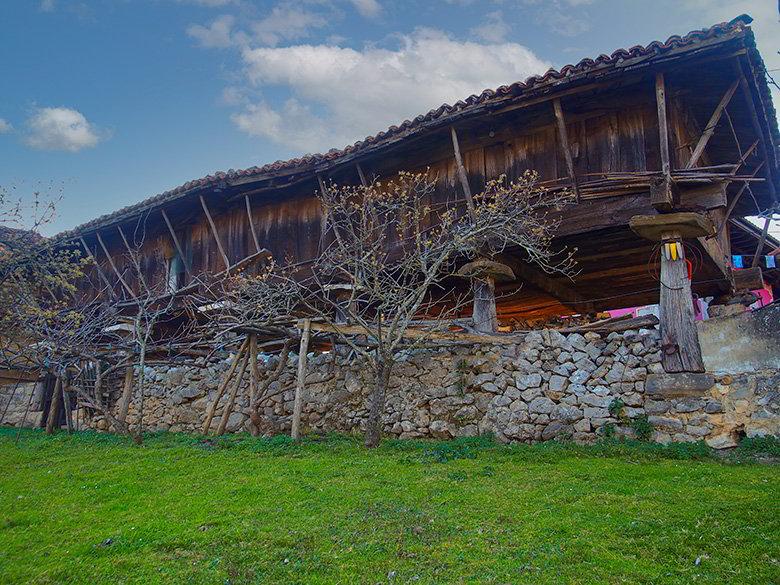
And another exceptional find is the Fondón house, with its artistically carved corridorand a bread basket of 15 pegollos, which the experts say was the result of the union of two hórreos, and is considered one of the largest in Asturias.
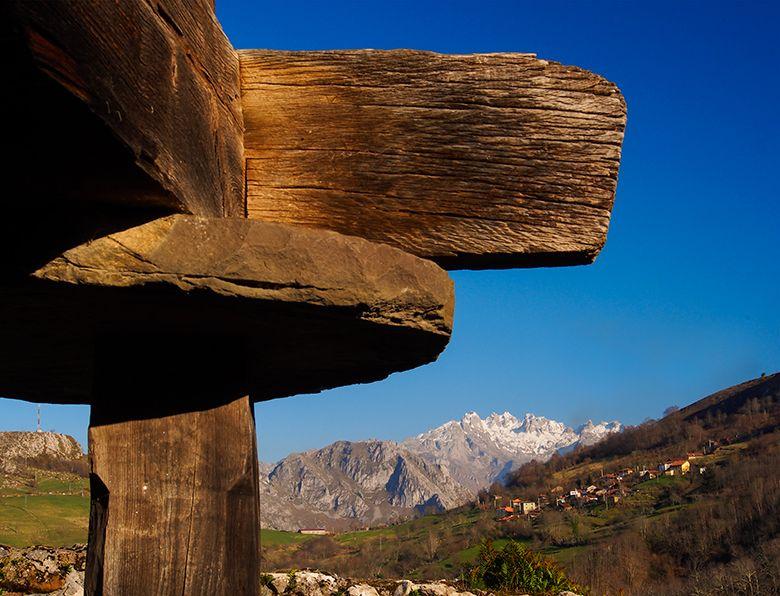
Of course, you can't leave Pen without visiting the chapel of San Roque, without admiring its many hórreos and without enjoying the splendid views of the Picos de Europa from some of its corners, perfect for sitting down and letting your eyes and imagination fly...
Tuña, the Exemplary Town where General Riego was born
Imagine a sunny, peaceful village at the bottom of a valley through which the river that gives it its name flows.
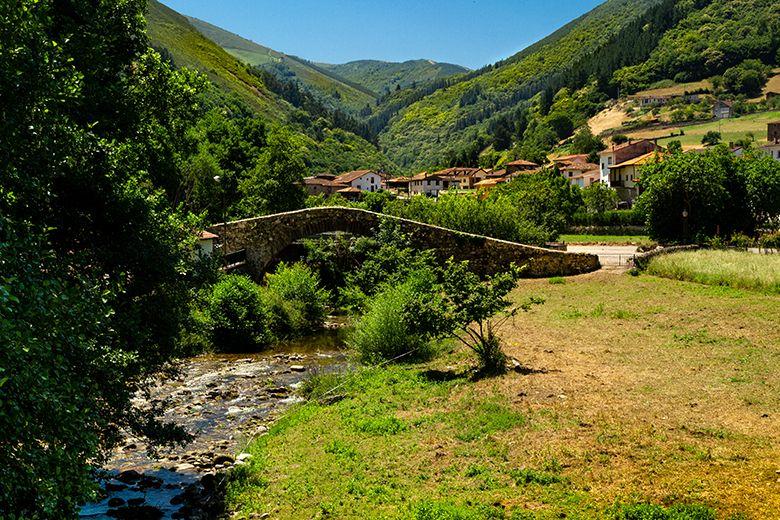
Imagine one of the villages with the most stately and noble architecture in the whole of Asturias: you have arrived in Tuña, in the council of Tineo.
And among the palaces, towers and ancestral homes, you will see its powerful granaries, with history written in their wood. They are everywhere in the village, omnipresent.
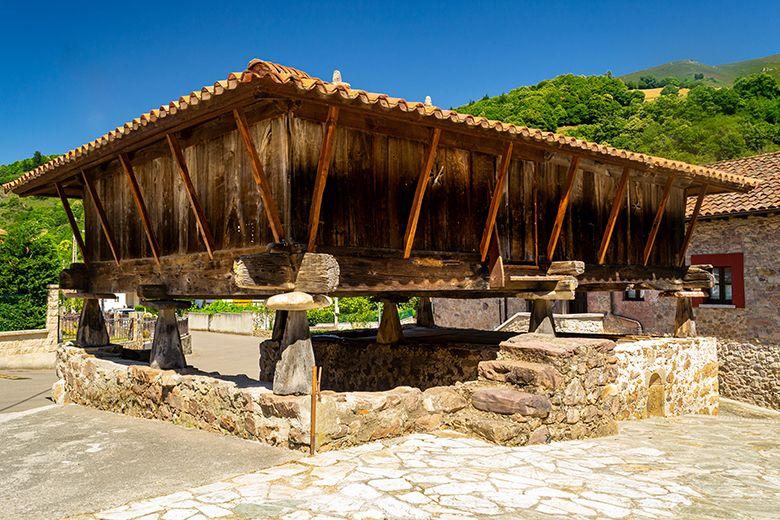
As omnipresent is the figure of General Rafael del Riego, one of the most outstanding personalities of the Spanish 19th century, and a precursor of constitutional freedoms.
The general from Tintes has his bust in the square that bears his name, where the village church is located. Furthermore, his birthplace is very well preserved and it is a pleasure to contemplate it, as well as to see the murals in the area alluding to this exalted figure.
Furthermore, Tuña, which was an Exemplary Town of Asturias in the year 2000, proudly displays its monument to the Chosco, a sausage typical of this land and unique in the world.
It also displays its Roman past, when the Empire transported the gold reserves extracted from western Asturias over the Tuña bridge...
Peḷḷuno: the hórreos and the legend of a queen
Peḷḷuno, in Aller, gently slopes down a gentle slope, as if it wanted to walk slowly and quietly to the bottom of the valley. And all the while, very close by, high mountains, and great limestone walls, ideal for climbing.
This Allerano village is so natural that it is no coincidence that it is one of the gateways to the ascent to Peña Mea, famous for its large "güeyu" carved into the rock (an impressive hollow in the middle of the rocky mass).
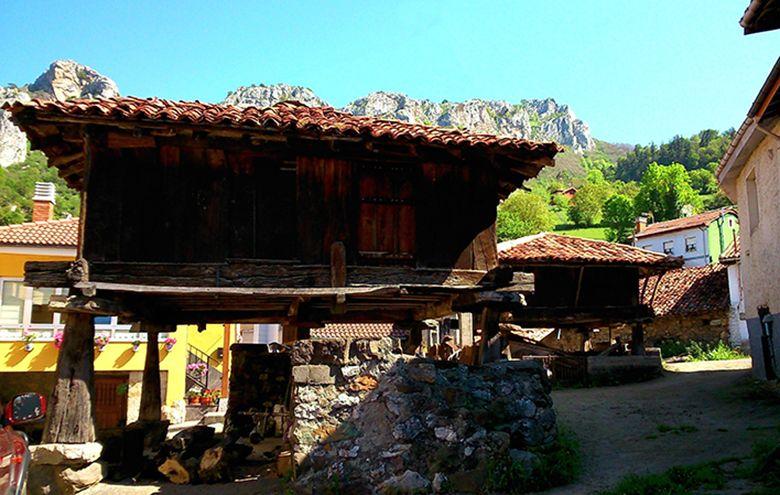
Precisely because of its loyalty to traditions and the past, Peḷḷuno preserves magnificent examples of traditional architecture, including a good number of hórreos.
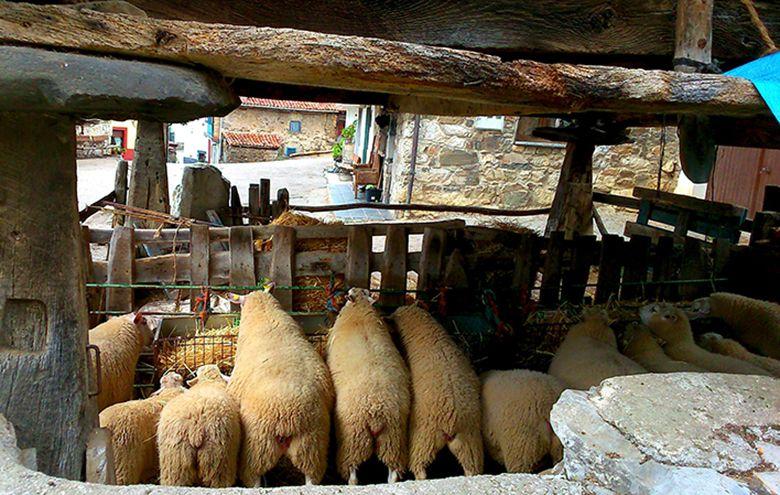
So there are many surprises in store for you in this village, because few places in Asturias can claim to be the birthplace of a queen.
History tells us that Urraca, "the Asturian", illegitimate daughter of Alfonso VII and Doña Gontrodo, was queen consort of Navarre, and after being widowed, queen of Asturias, and it turns out that her birth is linked to Peḷḷuno, and it is still possible to see there, in Vegapalacio, the remains of the palace in which Alfonso VII fell in love with Doña Gontrodo, mother of the future queen of Asturias.
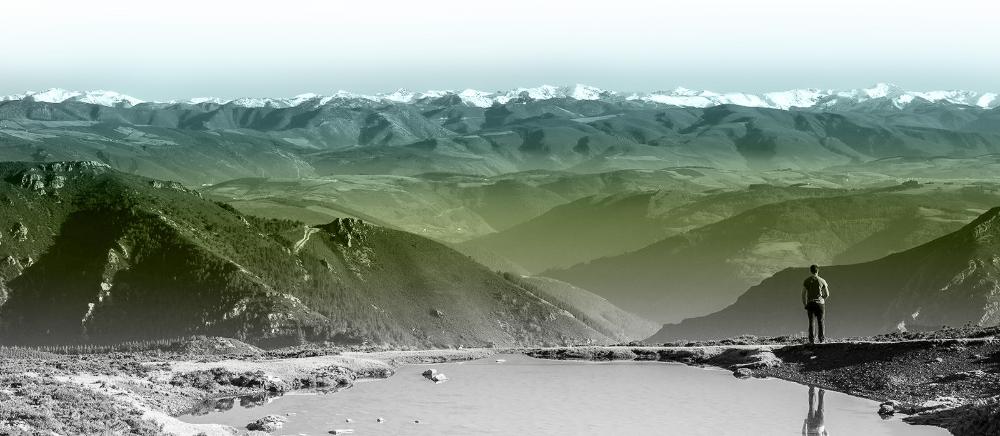
Subscribe to our newsletter and take advantage of offers, discounts, and news
Subscribe

